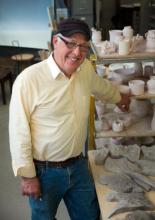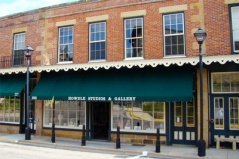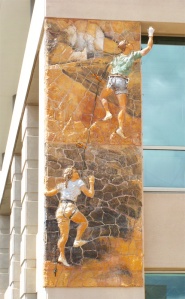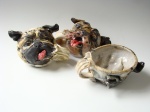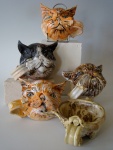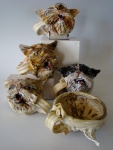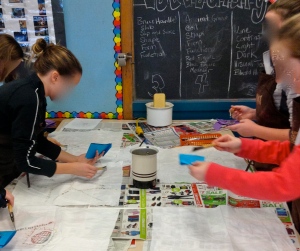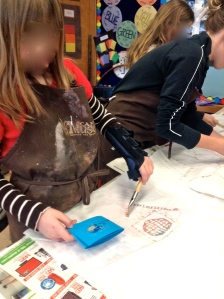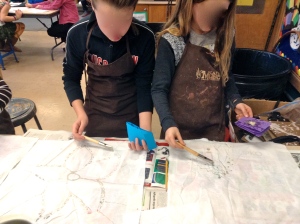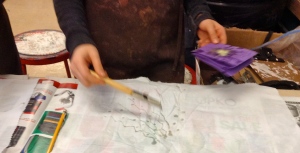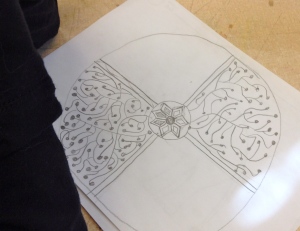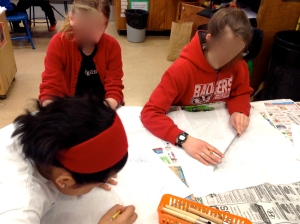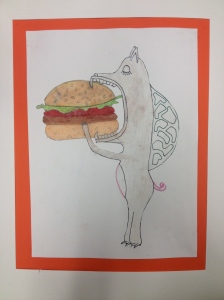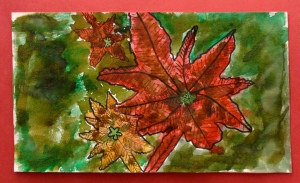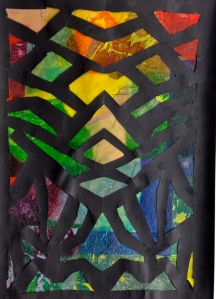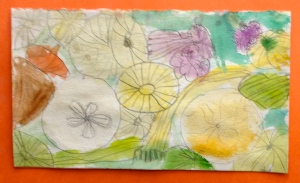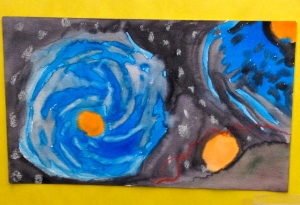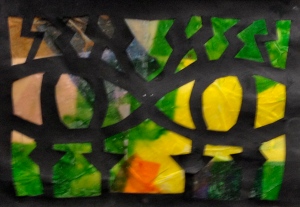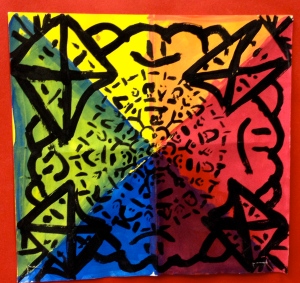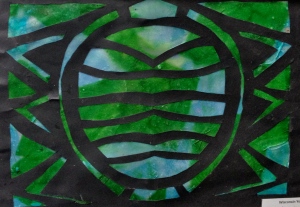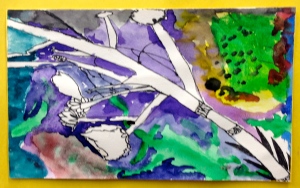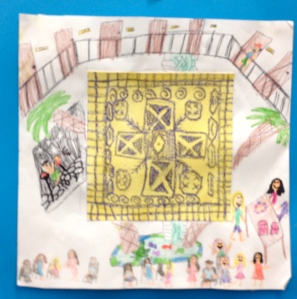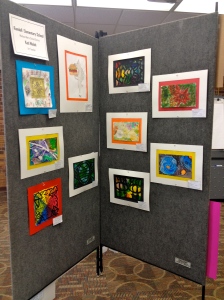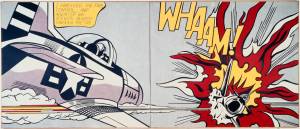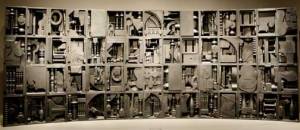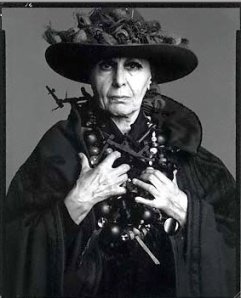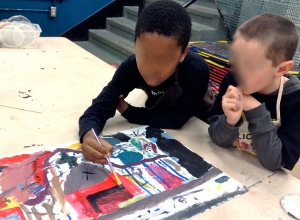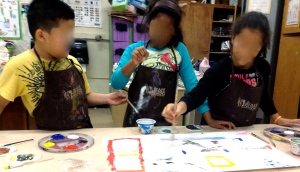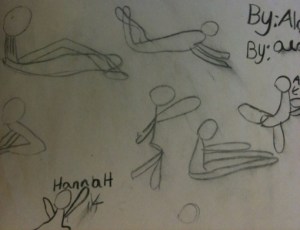Ms. B, our music teacher, told me third graders were learning about Russian Balalaikas in music class and many balalaikas have rosemaling on them. I didn’t know what a balalaika was but I knew lots about rosemaling! My grandma is a rosemaler and she taught me when I was little. Rosemaling was popular in Norway, Russia and many other eastern European countries. Ms. B concentrated on Russia in Music and we learned more about Norway in Art.
This is a balalaika:
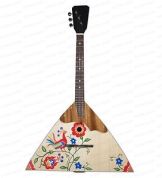 Rosemaling is an art for the common person. It was popular when Rococo and Baroque art was popular. But Rococo and Baroque art is really just for the rich. Rosemalers taught each other in groups called guilds and they traveled around the country painting in people’s homes. They painted a lot of furniture. My grandma was taught by a Norwegian friend named Esther. She painted a lot of special places for weddings and babies. Here is a plate she painted for my other grandma and grandpa:
Rosemaling is an art for the common person. It was popular when Rococo and Baroque art was popular. But Rococo and Baroque art is really just for the rich. Rosemalers taught each other in groups called guilds and they traveled around the country painting in people’s homes. They painted a lot of furniture. My grandma was taught by a Norwegian friend named Esther. She painted a lot of special places for weddings and babies. Here is a plate she painted for my other grandma and grandpa:
 But she also painted plates just for arts’ sake as well:
But she also painted plates just for arts’ sake as well:
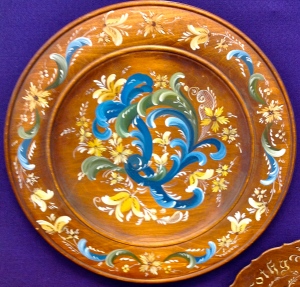 Grandma first taught me when I was in third grade but the earliest example of my own rosemaling that I still have is from when I was in 5th grade:
Grandma first taught me when I was in third grade but the earliest example of my own rosemaling that I still have is from when I was in 5th grade:
 Third graders started by looking through some of my grandma’s old rosemaling designs as well as her books.
Third graders started by looking through some of my grandma’s old rosemaling designs as well as her books.
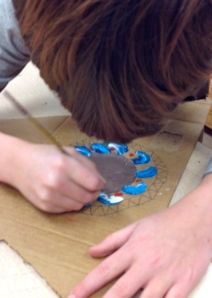
Third grade balalaikas turned out beautifully!
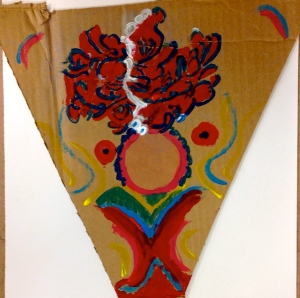
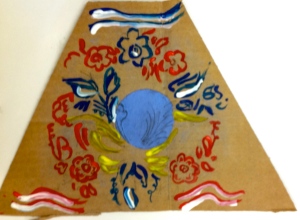

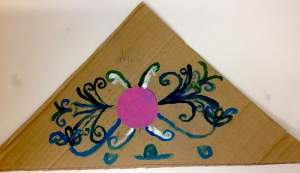 Check out some of the third graders performance of their Balalaika song here:
Check out some of the third graders performance of their Balalaika song here:
https://www.youtube.com/watch?v=Ni76Jmt7yNY
MMSD Art Standards:
Standards One A: Visual Memory and Knowledge – Students will know and remember information and ideas about the art and design around them and throughout the world. Students will identify the subject matter or story communicated through art.
Standard One B: Art and Design History, Citizenship and Environment – Students will understand and value significance of the visual arts, media and design in relation to history, citizenship, the environment and social development.
Standard Three: Students will design artwork organized by compositional principals, expressive features and sensory qualities. Students will identify and use color, shape, line, texture and space in works of art. Students will identify repetition.
Standard Four: Creates – Students will create images and objects that communicate and express ideas using varied media, techniques and processes. Students will recognize and use previously introduced elements, media, techniques and processes and will continue to expand their knowledge which includes drawing as a tool for planning and techniques and processes of color mixing which include secondary colors.
Standard Six: Reflecting – Students reflect upon and assess the characteristics and merits of own work and the work of others. Students will participate in group discussions describing the artwork.
Standard Seven: Interpreting – Students will interpret the visual experience with a range of subject matter, symbols and ideas. Students will identify the narrative qualities of artwork such as cultural meanings and illustrations. Students will create artwork with various subject matter, symbols and emotional content.
Standard Eight: Understanding – Students understand the function and structure of the visual arts in relation to human history and cultures. Students will view styles and techniques of a limited number of artists and/or cultures past and present.
Standard Nine: Making Connections – Students will make connections among the visual arts with other disciplines. Students will start recognizing the principles of art in various art disciplines and recognize the endless relationships between visual arts and other disciplines.
MMSD Music Standards:
Standard Eight: Relating – Students relate music to all other arts and disciplines. Students will identify similarities in the meanings of common terms such as form, patter and contrast used in music and visual arts.






